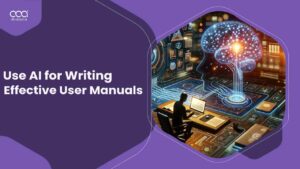The need for multilingual content has never been greater. AI writing software emerges as a pivotal tool in this landscape, enabling seamless creation of content that resonates across linguistic boundaries.
This article will teach you how to use AI writing software for multilingual content creation in New Zealand, exploring best practices, advantages, and how to measure the impact of the content created. Read on to learn how to make the most of the best AI writing tools in New Zealand.
How to Use AI Writing Software for Multilingual Content Creation in New Zealand for 2024: Best Practices
Creating effective multilingual content with AI writing software, as outlined in how to use AI writing software for multilingual content creation in New Zealand, is an intricate process that requires a balance of technology and cultural insight. Here are some key practices:
Choosing the Right AI Tools:
It’s crucial to select software with robust language models capable of handling nuances in translation. Look for tools that not only translate words but also grasp the contextual meaning, idiomatic expressions, and cultural nuances.
The artificial intelligence tool should be able to adapt to different writing styles and tones, ensuring the content is appropriate for various target audiences.
Collaborating with Human Localization Experts:
AI efficiency is significantly enhanced when paired with the expertise of human translators. These experts provide the cultural context and idiomatic understanding that AI may miss. They play a vital role in reviewing AI-generated content for accuracy and cultural appropriateness, ensuring that the content resonates with the local audience.

Understanding Cultural Contexts:
The software should be capable of generating content that is not only linguistically accurate but also culturally relevant. This involves understanding local customs, traditions, and societal norms to avoid cultural insensitivity.
Continuous Learning and Adaptation:
Opt for AI tools that continuously learn and improve from interactions and feedback. This feature allows the software to become more accurate and relevant over time, adapting to changes in language and cultural trends.
Optimizing Graphics for Different Cultures:
Visual content should be tailored to suit different cultural preferences and norms. This can include adapting color schemes, imagery, and design layouts that are culturally sensitive and appealing.
Regular Quality Checks:
Implement a system of regular reviews to ensure the content maintains a high standard of quality. This involves checking for accuracy, cultural appropriateness, and overall readability.
Feedback Loop Integration:
Incorporating audience feedback into the content creation process is essential. This feedback can guide the AI in refining its output, ensuring that the content remains relevant and engaging. When selecting AI writing software for multilingual content, it is important to consider the following extended features:
What Are the Key Features to Look for in AI Writing Software for Multilingual Content?
What Are the Advantages of Using Multilingual AI Writing Software?
AI writing software enhances the quality of multilingual content in several ways, illustrating the essence of how to use AI writing software for multilingual content creation in New Zealand. These enhancements include improved accuracy, consistency across languages, and the ability to tailor content to specific cultural contexts.
Precision in Language:
The software ensures grammatical correctness, appropriate use of vocabulary, and proper sentence structure in different languages, contributing to the overall linguistic quality of the content.
Cultural Sensitivity:
AI tools can be designed to recognize and adapt content to fit cultural contexts, ensuring that the content is not only accurate but also culturally appropriate and sensitive.
Expertise in Specific Domains:
By leveraging specialized knowledge databases, AI can produce content that is not only linguistically accurate but also relevant and informative in specific subject areas.

How Does AI Writing Software Enhance Multilingual Content Quality?
Measuring the success of multilingual content created with AI, as per the guidelines in how to use AI writing software for multilingual content creation in New Zealand, is crucial for understanding its impact and effectiveness. This process involves several key methods
Engagement Analytics:
One of the primary indicators of successful content is user engagement. By analyzing metrics such as likes, shares, comments, and views, content creators can gauge how well their content resonates with the audience. High engagement rates often suggest that the content is relevant, appealing, and valuable to its target audience.
Audience Feedback:
Direct feedback from the audience is a valuable source of information. It provides insights into how the content is received and perceived across different cultures and linguistic groups. Feedback can come in various forms, including surveys, comments, and social media interactions. Analyzing this feedback helps in understanding the strengths and weaknesses of the content and guides future improvements.

Goal-Oriented Performance Analysis:
It’s essential to assess whether the AI-created content meets its intended goals. These goals could range from increasing brand awareness to driving sales or improving customer engagement. By evaluating the content’s performance against these objectives, content creators can determine its effectiveness and make data-driven decisions for future content strategies.
Quality and Accuracy Assessments:
Particularly for AI-generated multilingual content, assessing the linguistic quality and cultural accuracy is vital. This involves ensuring that the content is grammatically correct, contextually relevant, and culturally sensitive. Quality assessments can be conducted through expert reviews or by using specialized software tools.
SEO Performance:
For online content, how well it ranks in search engine results can be a significant indicator of success. Good SEO performance means the content is not only visible but also deemed relevant and valuable by search engines. This is particularly important for reaching a broader audience in a multilingual context.
What Are the Emerging Trends in AI-Assisted Multilingual Content Creation?
The landscape of AI-assisted multilingual content creation is rapidly evolving, with several emerging trends shaping its future, aligning with how to use AI writing software for multilingual content creation in New Zealand. These trends highlight the growing capabilities and applications of AI in producing content that transcends language barriers.
- Advancements in Natural Language Processing (NLP): AI technologies, particularly NLP, are becoming more sophisticated. This leads to more accurate and nuanced translations and content creation, with a better understanding of linguistic subtleties and cultural nuances.
- Personalization and Localization: There is a growing trend towards creating content that is not only translated into different languages but also localized to fit specific cultural contexts. AI tools are increasingly capable of adapting content to local preferences, norms, and idioms, making it more relevant and engaging for each target audience.
- Integration of Voice and Visual Technologies: Alongside text, AI is also being used to create multilingual content in other forms, such as voice and visuals. This includes voice translation services, AI-generated voice overs, and AI-assisted video translations, which are expanding the horizons of content creation.
- Machine Learning for Continuous Improvement: AI systems are leveraging machine learning to continuously improve their content creation capabilities. By learning from user interactions, feedback, and new data, these systems are becoming more efficient and accurate over time.
- Increased Focus on User Experience (UX): The UX of AI writing software is becoming a focal point. This involves making the software more intuitive, user-friendly, and accessible to people with different levels of technical expertise, thereby broadening its usability.
- Ethical Considerations and Bias Reduction: As AI plays a larger role in content creation, there is an increasing focus on ethical considerations and bias reduction. This includes ensuring that AI-generated content is fair, unbiased, and does not perpetuate harmful stereotypes.
FAQs
Can ChatGPT use different languages?
What is the AI algorithm for language translation?
Do translators use AI?
What is the best free AI translator?
Conclusion
From ChatGPT’s ability to communicate in multiple languages to the sophisticated neural network algorithms driving language translation, AI is playing an increasingly pivotal role in creating multilingual content.
Now that you know how to use AI writing software for multilingual content creation in New Zealand check out the other articles in our How To section to learn about different software tools and use them to create compelling and engaging content that ranks. To expand your knowledge of the ever-evolving world of AI, read the articles we have in our AI Terminology Guide.





